While the Roman soldiers were mocking Him and torturing Him, Jesus felt nothing but compassion for them. Because He knew that they were capable of so much more, yet they chose to behave like this.
All posts by Michaël Samyn
The good enables us to live well, while evil leads to death.
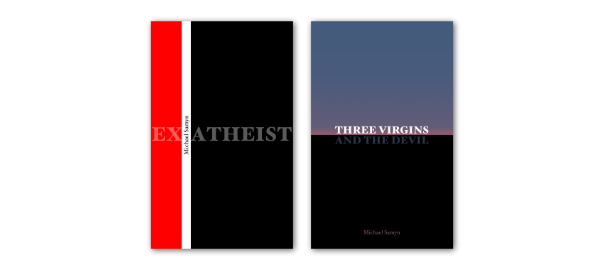
Books on Amazon
During last Lent, in 2024, I have written my first novel. It’s called Three Virgins and the Devil. It’s a romantic story about three siblings from an atheist family. Joseph converts to Catholicism and wants to help his sister Eva, a New Age lesbian, and Thomas, a social justice warrior, find their way to God. But his zeal is hampered by several personal flaws.
At the occasion of the fourth anniversary of my own conversion, I have published both Three Virgins and the Devil and my earlier non-fiction book Ex-Atheist on Amazon in e-book and paperback formats. Please have a look and let me know what you think.
The 3 elements of Generato non creato
Generato non creato is a generative art work that consists of an endless variation of images created from a few simple elements, illustrated below.
16 meshes
+ 9 images

+ 17 code files

=
See it in action here.

The anatomy of Generato non creato
Generato non creato is my first generative art piece. You can mint it on fx(hash). It’s a complex algorithm programmed in p5.js that creates images composed of several elements arranged in a circular symmetrical fashion inspired by monstrances. What follows is a dissection of the different parts that may or may not be present in any particular instance.
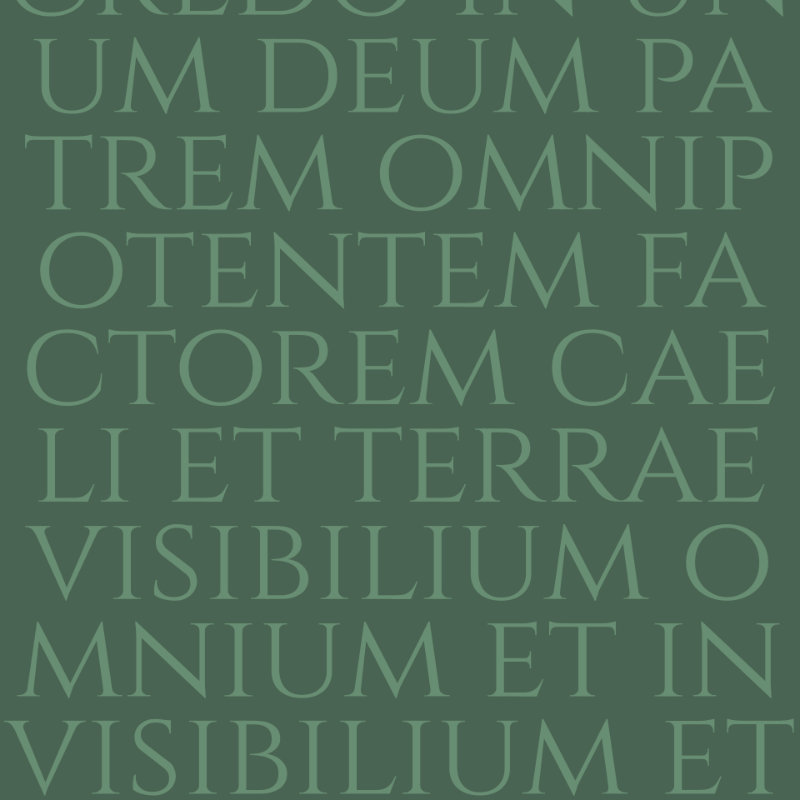
We start with the Nicene Creed from which the title is derived. We chose to use the Italian phrase because of the word “generato” which is a translation of the Latin “genitum”. The algorithm selects a random piece from the full Latin text and adapts the font size in order to fill the entire square.
The creed is a profession of faith that is 1700 years old. We say it at Holy Mass every Sunday. In it we declare to believe in God the father, creator of the universe, Jesus Christ, savior of Humankind and in the Holy Spirit, the giver of life. The prayer insists on the generation of Jesus Christ, as opposed to the creation of everything else: the son and the father are one.
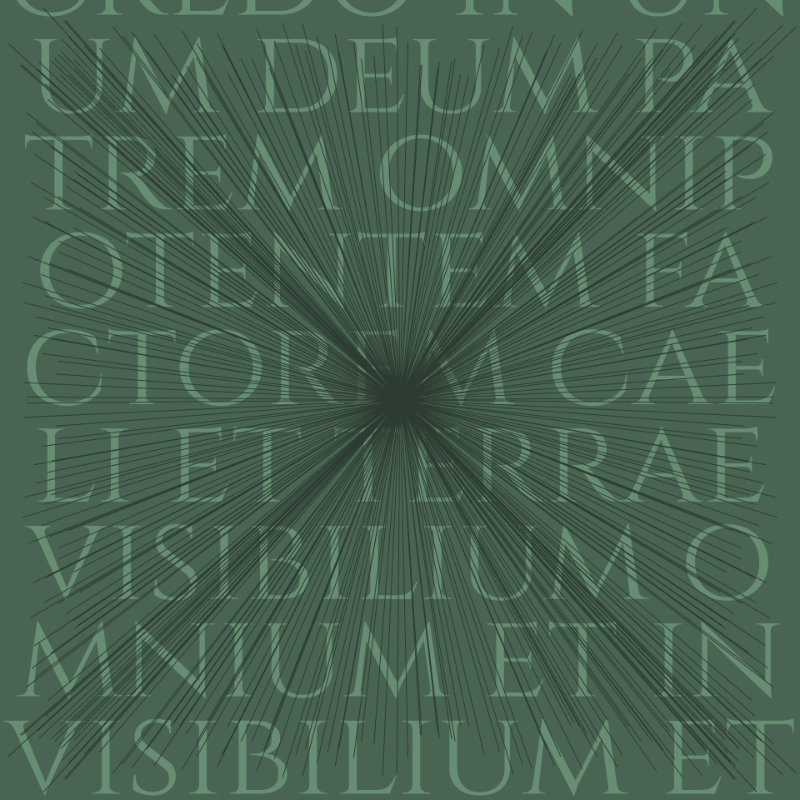
The project started with lines drawn on a 2D canvas. I spent an inordinate amount of time creating an algorithm that would allow for the center of the rays to be anywhere within the square. Only to decide later to keep it in the center always.

I switched to a 3D canvas in order to use lights. But I couldn’t figure out how to tweak the lights in p5.js for the effect that I wanted. So I used a bitmap to add shadows all around.
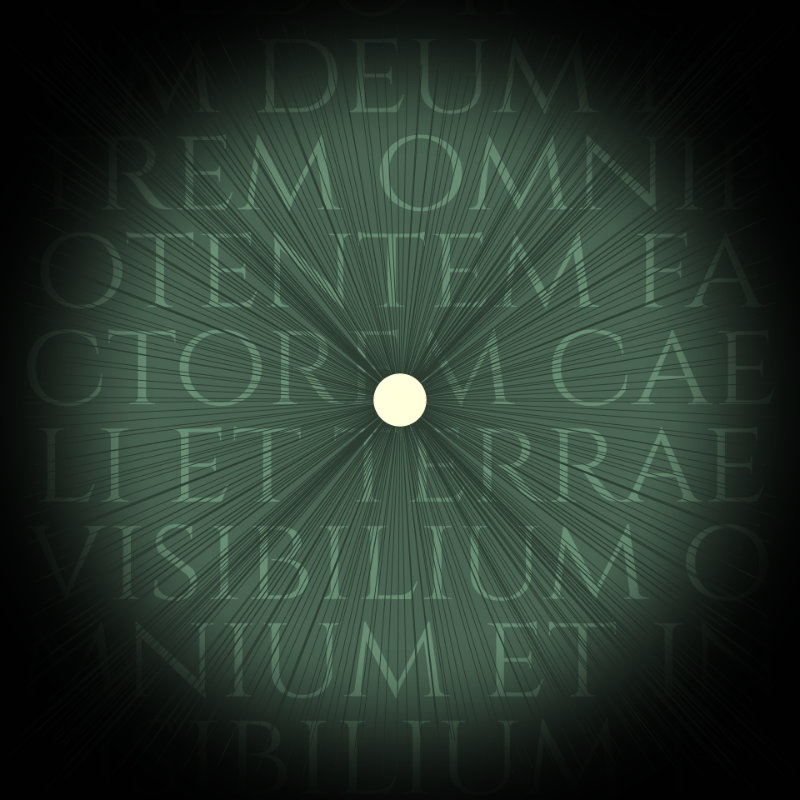
To be honest, initially I hadn’t imagined that there would be a Holy Host in the middle of the piece at all times. I had many ideas. But the Eucharist was the one that stuck, however. As a Catholic, I believe Jesus when He says that bread becomes His body during the liturgy. And I love to spend time with Him in Eucharistic Adoration.
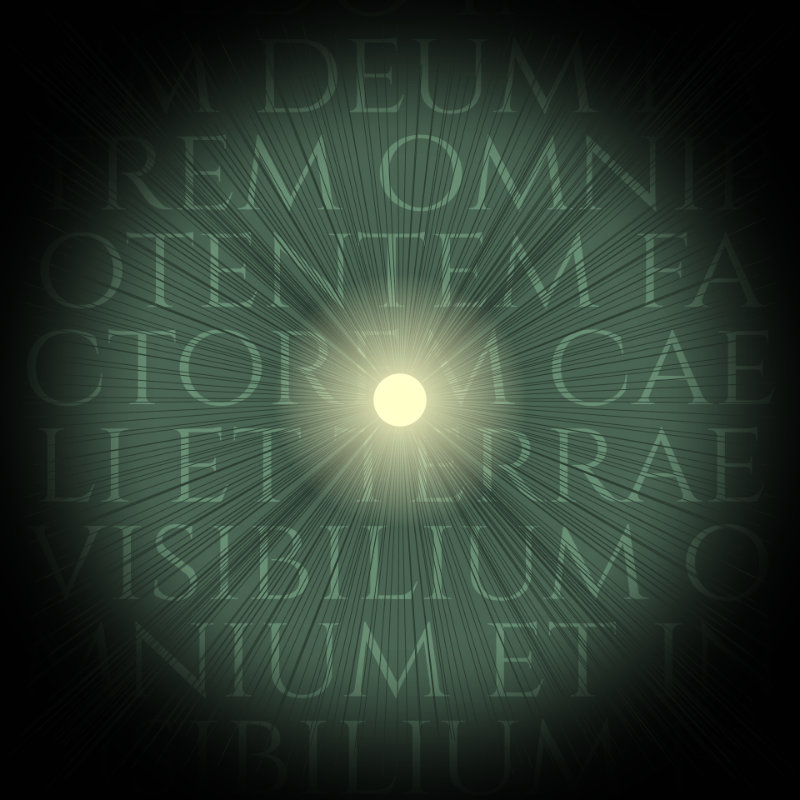
To express the holiness of the sacramental bread I added a halo. Again this was done with a bitmap and not with actual lights.

No 3D world of ours is complete without airborne particles. In this case they emanate from the center, confirming the general centrifugal thrust of the design, like light and love and grace and joy coming from the source of the world. The generative animation is a simple way to remind the viewer that they are looking at a realtime event, not just an image.
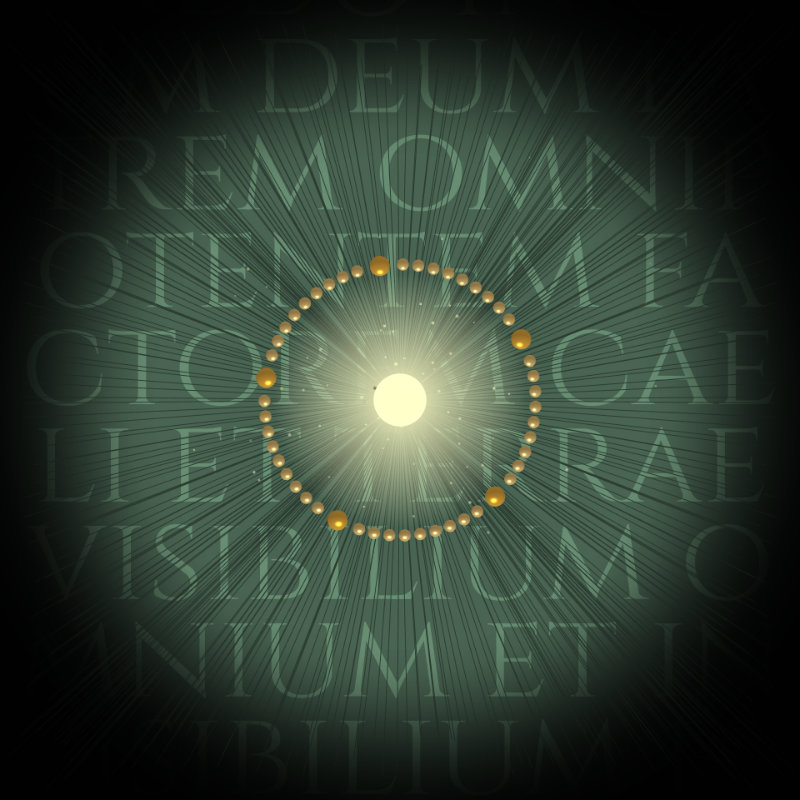
To surround the son with maternal love, I added a rosary, which is a string of 55 beads, 5 big ones to pray the Lord’s Prayer and 50 small ones to pray the Hail Mary prayer. With each decade we meditate on one of the mysteries of Christ’s life. There’s 4 groups of mysteries: Sorrowful, Joyful, Glorious, and Luminous mysteries. In the last decade of the latter, we contemplate the institution of the Eucharist.
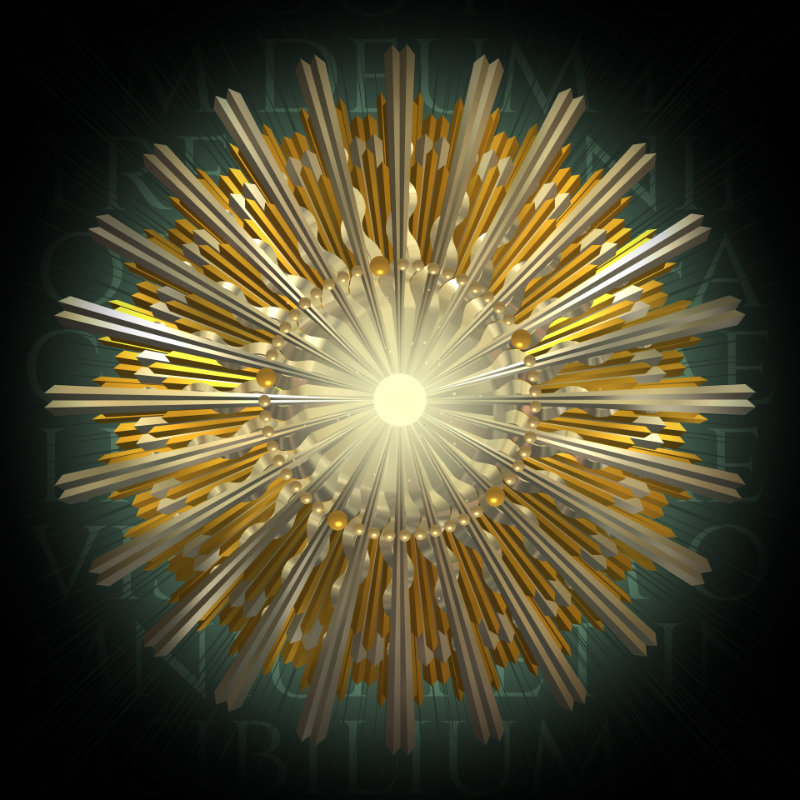
Then we start building the rays of glory. The first layer is composed of straight rays and wavy ones. The algorithm picks a number that allows for symmetry (4, 6, 8, etc), then divides the circle into that many parts, creates half of such a part with growing elements, mirrors that part and then duplicates the result while rotating until the circle is full, adding some randomness to number, type (straight or wavy), color (gold or silver), width and length for variation.
These are the first 3D elements and as such they are lit. The color of the light is derived from the color of the background. The reflective effect is caused by an environment map.
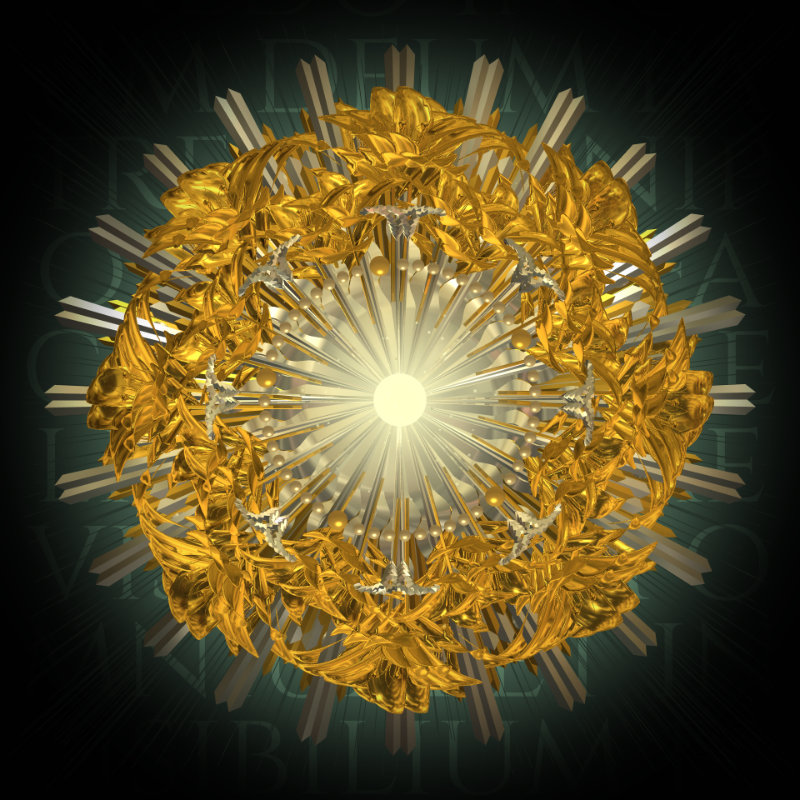
Then we use the exact same algorithm but with different 3D models: a lily flower and an ear of wheat, the first symbolizing purity and chastity, and the second fertility and abundance. Since especially the flower is a complex shape, combinations of many can produce unexpectedly rich results.
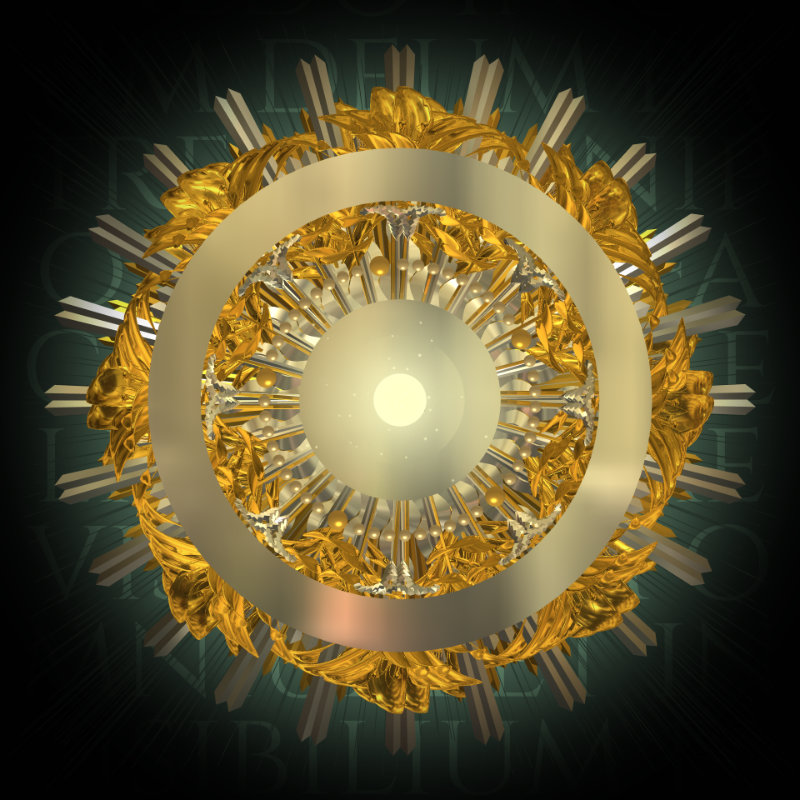
The discs are the only 3D elements that are generated by code and not based on a 3D model created by Auriea. This was necessary to make sure that they did not overlap but instead remained perfectly concentric. Again number, radius, width and color are randomized.
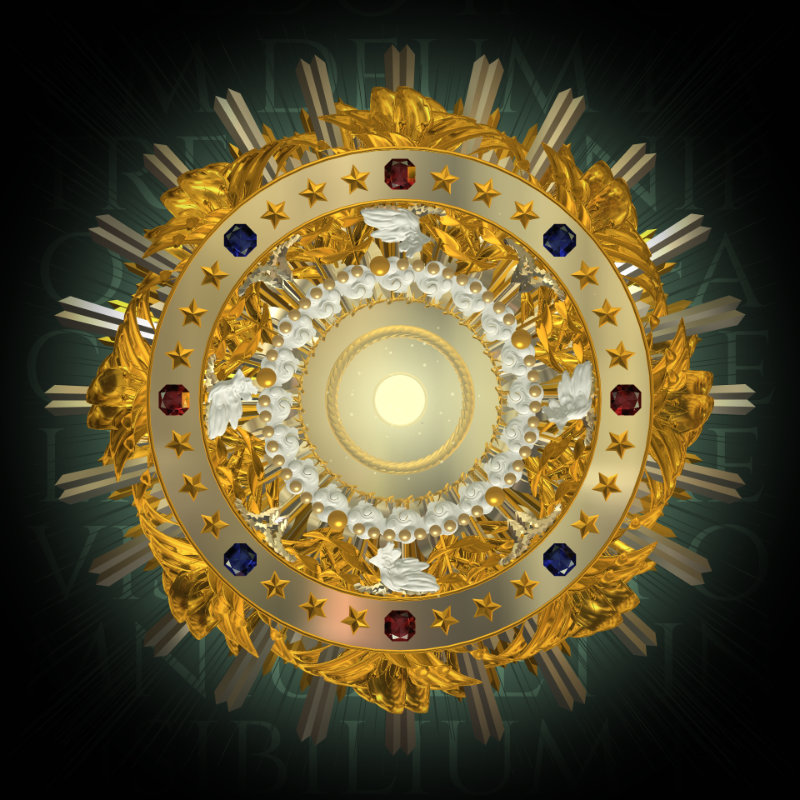
Taking the positions of the discs, ornaments are added such as gems (red, green or blue), stars (with 5 or 6 points), domes, clouds and wings. The latter two could be silver or gold but also white. These ornaments too are arranged in symmetrical repeating patterns, always affirming the horizontal, vertical and diagonal symmetry of the whole. With the exception of the wings, of which there can be three. Of some elements, the colors sometimes alternate (as in the gems in the image above).
At the edges of some discs a border is added, a simple torus or a ribbon made of smooth elements or thorns.
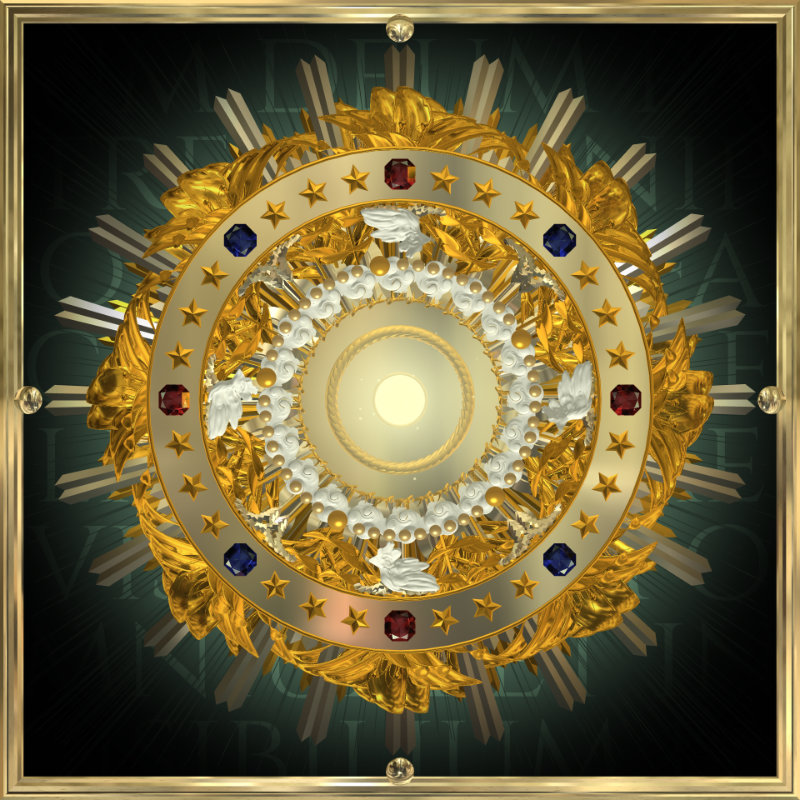
And as a finishing touch a frame is added, sometimes adorned with little spheres at the four cardinal points, to remind of the Cross. There’s also the possibility of a circular frame or a half circle (arc).
Try it yourself!
Please go and play with this for yourself on fx(hash): click “run” or “open” under the image. Drag to reveal the 3D composition and press the N key a new variation.
And please do mint an instance for yourself. This supports our work as well as research into Parkinson’s disease.
Thank you for reading.
Michael Samyn.
The key to faith is humility. The thing that keeps most away from faith is pride. But nothing is harder for a person than understanding that they are prideful. Pride protects itself. And in many cases, as it was in mine, pride is a vital protection mechanism. Pride is the only thing that keeps us standing. We would collapse without it. And we don’t understand that it is precisely this collapse that will save us.
The eucharist is the only real thing in the world.
Dear atheist, imagine God. Now imagine Him ten times bigger. And now a million times bigger. Keep going until you believe.
A life with God is infinitely better than a life without God, disregarding whether He exists or not. Atheists have likened it to a narcotic. That’s how good it is! So the real choice is utterly pragmatic and simple: do you want a good life?
Only the devil can make anyone believe that Christianity is false.